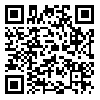Volume 9, Issue 2 (2020)
JFST 2020, 9(2): 130-143 |
Back to browse issues page
Download citation:
BibTeX | RIS | EndNote | Medlars | ProCite | Reference Manager | RefWorks
Send citation to:



BibTeX | RIS | EndNote | Medlars | ProCite | Reference Manager | RefWorks
Send citation to:
Abbasi M, Falahatkar B, Bani A, Heidari B. عملکرد انکوباسیونی و رشد لارو ماهی قرمز (Carassius auratus Linnaeus, 1758) تحت تاثیر دماهای مختلف. JFST 2020; 9 (2) :130-143
URL: http://jfst.modares.ac.ir/article-6-46123-en.html
URL: http://jfst.modares.ac.ir/article-6-46123-en.html
1- Fisheries Department, Faculty of Natural Resources, University of Guilan, Sowmeh Sara, Guilan, Iran
2- Department of Marine Sciences, The Caspian Sea Basin Research Center, University of Guilan, Rasht, Guilan, Iran
2- Department of Marine Sciences, The Caspian Sea Basin Research Center, University of Guilan, Rasht, Guilan, Iran
Abstract: (2154 Views)
Temperature is the main environmental factor affecting the development of fish eggs. In this study, the effect of incubation temperature on fertilization rate, hatching rate and growth in goldfish (Carassius auratus) was investigated. Egg and sperm production were obtained by ovaprim injection and artificial propagation. Eggs were incubated at four temperatures (21, 24, 27 and 30 °C) with 3 replicates for each treatment and cultured for 40 days at the same temperature. The larvae were grown in the same aquarium that had been hatched under the same temperature condition for 40 days. The results showed that there was no significant difference in fertilization rate of incubated eggs at different temperatures, but the highest (97%) and lowest (94%) fertilization rates were observed at 24 °C and 21 °C, respectively. The maximum incubation time was recorded at 21 °C and the minimum time required at 30 °C (P < 0.05). The highest percentage of hatching (74.4%) was observed at 24 °C and it decreased with increasing water temperature (P < 0.05). Although, the temperature of 30 °C showed the highest value of length, weight and specific growth rate of larvae in comparison to other temperature treatments, but the highest anomalies (13%) were observed in this treatment, too. The best temperature of incubation and growth of larvae is 24°C and 27°C for goldfish, respectively.
Article Type: Original Research |
Subject:
Physiology and Biochemistry
Received: 2020/09/17 | Published: 2020/04/20
Received: 2020/09/17 | Published: 2020/04/20
| Rights and permissions | |
 |
This work is licensed under a Creative Commons Attribution-NonCommercial 4.0 International License. |








